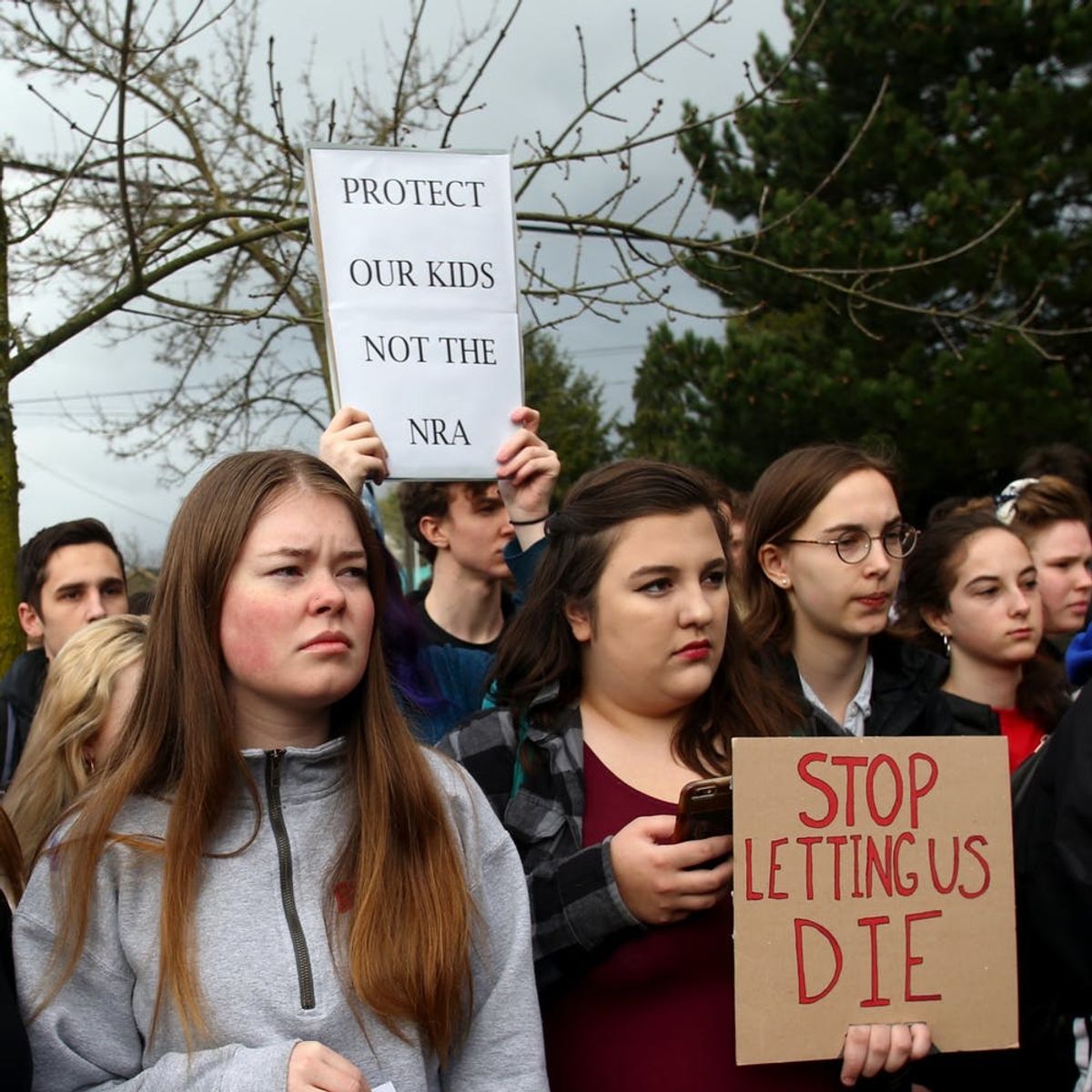For some student activists, breaking school rules to protest is about feeling safe.
Across the Country, Teens Choose to Protest in the Face of Punishment

Jo Herman, a 17-year-old senior at Rocky Point High School in Suffolk County, New York, knew that she would get in trouble for joining in Wednesday’s nationwide school walkout. Along with a few dozen of her peers, Herman walked out anyway. For their act of protest, the students were slapped with a one-day in-school suspension and were banned from participating in any after-school activities on Wednesday, Thursday, and Friday.
Like every other student in the Rocky Point Union Free School District, the roughly 60 Rocky Point High School students who joined Jo Herman in Wednesday’s walkouts knew they were going against school orders. They had all received an email from the district’s superintendent that warned of disciplinary action against students who opted to participate.
“No Rocky Point student will be permitted to leave the premises as part of any of these upcoming events or otherwise, without appropriate permission,” reads the email, which Herman provided to Brit + Co. “Any student found to have left school without appropriate permission on any school day during the year will be subject to administrative action in accordance with the district’s code of conduct.”
Herman didn’t know exactly what the consequences would be, but it was a gamble she was willing to take.
“For me, [walking out] was a show of support for Parkland, and [communicating that] we don’t want this anymore,” Herman says. “Right after the Parkland shooting, it hit me: ‘Wow what if someone came into a school and shot us?'”

National Walkout Day marked the first of several upcoming student-organized actions against gun violence in schools initiated by the tragic fatal shooting of 17 people at Marjory Stoneman Douglas High School last month. Around the country, from Chicago and New York City to rural Arkansas, an estimated 185,000 people participated in the 17-minute-long walkout, demanding changes from tighter gun control laws to equal funding for schools in communities of color.
While many parents, teachers, and school administrators were supportive of students walking out in protest, other schools threatened punishment and swiftly followed through. One school in rural Arkansas, Greenbrier Public School, went to the extreme, inflicting corporal punishment on students who walked out, the Daily Beast reports.
Leading up to the walkout on Wednesday, there were several reports of school administrators forbidding students from participating in the protests, with some schools threatening detention or suspension as punishment. Other school administrators went beyond formal disciplinary action: Buzzfeed reports that one high school principal in New Jersey said that the school would cancel prom if students walked out.
I protested peacefully this morning and got suspended. A man threatened a kid with a knife at a PTA meeting and got gently escorted from the school. Show me the logic. pic.twitter.com/dCzcn5DARG
— jo (@jo_herman16) March 14, 2018
At Jo Herman’s school, the district superintendent’s words of warning were reiterated in an announcement from the school’s principal on the morning of the protest.
Bernard Sanchez, also a 17-year-old senior at Rocky Point High School, tells us that the announcement was intended to further discourage students from participating in the walkout.
“It was fear-mongering more than anything, and it worked,” Sanchez says. “It scared a lot of students into staying [in the building] and not walking out.”
But Sanchez says the scare tactic only strengthened his resolve.
“It’s the nature of protest itself to go against certain establishments or problems in society,” he reasons. “There’s a point to standing by your principles and going for what you believe in. If you commit to something important like this and respecting the lives lost, it shouldn’t be backed down from.”

Some schools went so far as to physically restrict students from protesting by locking them in classrooms or locking gates to the campus. Yet, even in these extreme instances, students found ways to make their voices heard.
In Concord, California, students at East Bay High School broke through school gates that had been chained shut in order to prevent students from leaving campus, according to the Mercury News.
Administrators at Grand Blanc High School in Grand Blanc, Michigan put the school in “secure mode” at the scheduled time of the walkout and locked students inside classrooms, M Live reported. Although students were unable to physically leave the school building, they found their own way to protest: Once the doors were unlocked, approximately 100 students held a sit-in outside the principal’s office for 17 minutes.
Even though they didn’t get support from school administrations, students took the chance and decided to make a statement regardless of the consequences. With at least one more walkout planned for April 20 (the anniversary of the Columbine shooting), in addition to the March 24 March for Our Lives in Washington DC, students are letting it be known that they refuse to be silenced.
For Jo Herman, these acts of resistance are about much more than making a point; they’re about feeling safe at school.
“I’m 90 days away from graduation. I really want to graduate. I don’t want to be shot in my classroom.”
What do you think of students protesting despite threats of punishment from their school administration? Tell us on Twitter @BritandCo.
(Photos via Scott Olson + Karen Ducey/Getty)



















